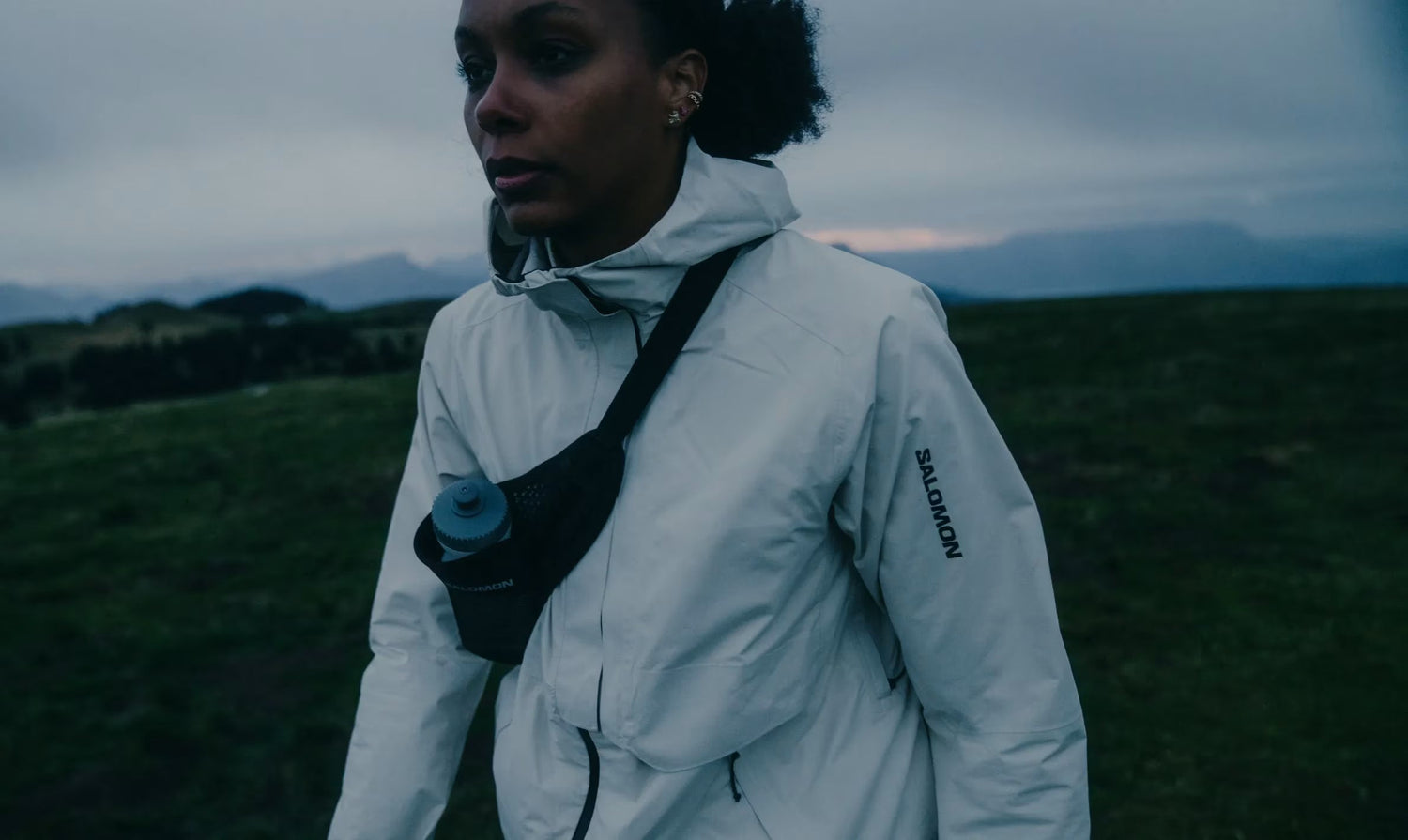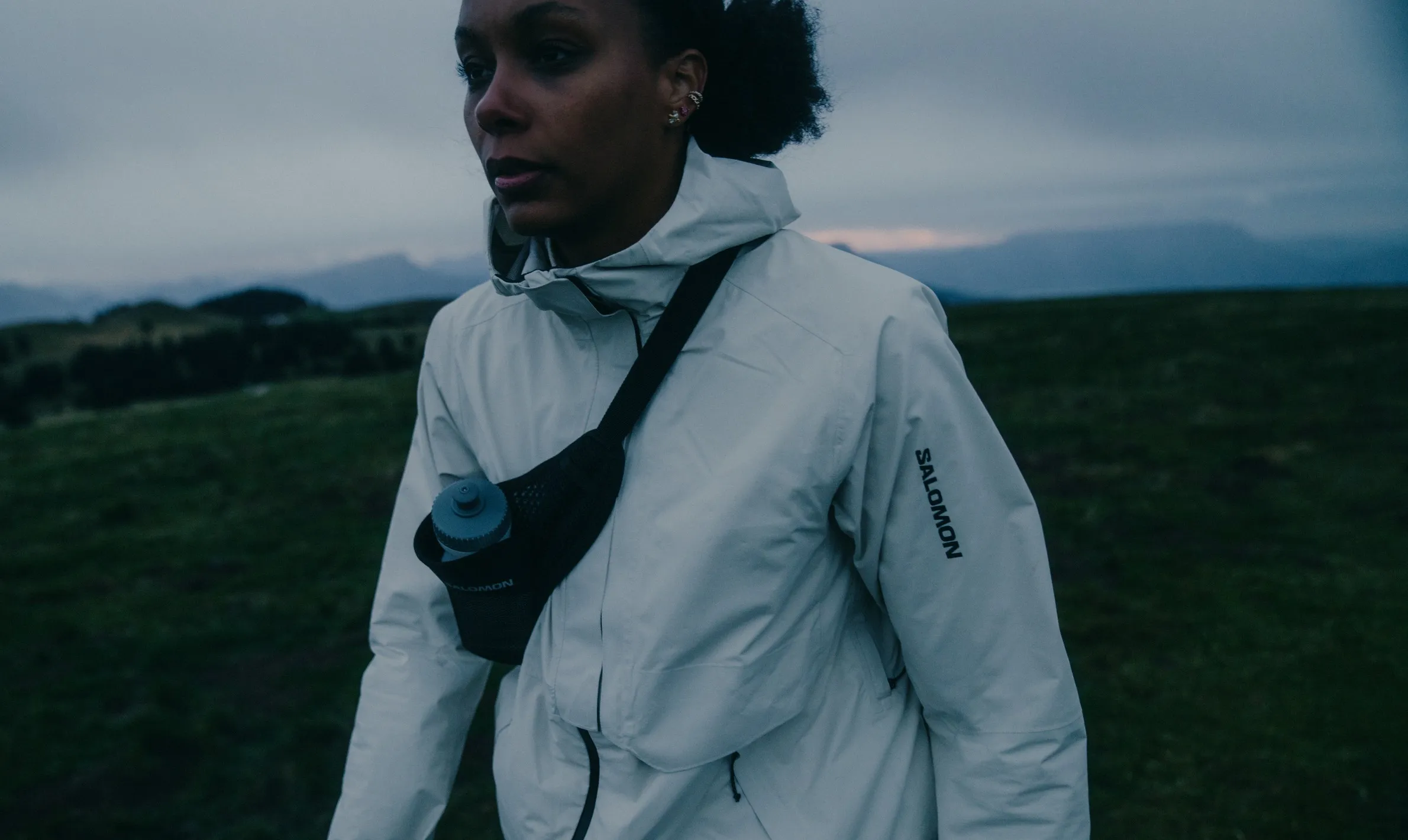
What to wear when hiking.
Days are getting longer, the weather is getting milder, nice days are returning and with it all comes the inspiration to get out on the trails again. And whether you’re heading out for a leisurely Sunday stroll in the forest, a hike in the mountains, or a trek lasting several days, we always ask ourselves the same question: What should I wear? Regardless of the season or the difficulty of your hike, your clothes should be well-suited to the activity, and they should be able to protect you from changes in the weather so that you can fully enjoy all the great things that come with hiking. Here are our tips on choosing the best clothing before you head out for a hike.
Before turning your closet inside out or investing in all new gear, it’s important to understand your objectives and to think through your hiking projects. Will you be going in summer or winter? In the mountains or by the sea? One day or several days? How often? Every weekend or once or twice a year? As fast as possible or slow and easy? Your needs will be different depending on the season, destination, environment, weather and your commitment, and the proper hiking gear will also need to vary. Having said that, there’s one principle that stands up to all kinds of weather and every situation: the magnificent three-layer system.
What are the differences between walking, hiking and trekking?
Underwear and base layers
Never underestimate the importance of socks and underwear when hiking. Because these garments are in direct contact with your skin, they should be able to protect you while also being comfortable enough for you to forget they’re there. As for socks, if you plan on walking a long time then we recommend wool because it’s so warm and breathable. Wool also dries quickly and it doesn’t smell as bad as synthetic fabrics when you sweat. Cotton is not very breathable and should be avoided. On the other hand, if you’re an energetic hiker, it’s preferable to wear socks made from synthetic materials, which are more ergonomic than wool socks. Because they fit the shape of your foot better, they are also more suitable for active walking. Finally, we recommend testing your socks with your hiking shoes before you hit the trail to avoid any unpleasant surprises (hot spots, pressure points, wrinkles…).
As with socks, avoid cotton underwear as well and instead go with synthetic or merino wool that’s very breathable and comfortable to wear. Ladies, we recommend wearing a sports bra rather than a traditional bra because of the additional support and comfort they provide.

As for your base layer, once again you should avoid cotton and opt instead for a wool or synthetic garment. Wool has the clear advantage due to its ability to regulate heat: when the weather is cold wool keeps you warm, and when it’s hot outside it keeps you cool. Wool base layers are often more expensive and require gentle care like hand washing. However, if you’re a day hiker, synthetic materials also work really well and they don’t leave as big of a hole in your budget!
T-shirt with long sleeves or short sleeves? For sure, the outside temperature as well as the season will play a role in your decision. However, regardless of the season and the weather, a long-sleeve shirt will also protect you from the sun, wick moisture better and be more comfortable if you need to add a second layer.
Insulating mid layer
Not getting cold is the key to hiking! Even in the middle of summer or in places where it’s hot, you should always be prepared for a cool night or a sudden drop in temperature. It’s therefore essential to carry something that will keep your body warm, which is the role of the mid layer. Fortunately, there are many options available in both down and fleece. Of the two, fleece is more robust and is highly recommended if you hike in the forest because it is more resistant to possible snags from branches than a down jacket. On the other hand, fleece is less compressible and will not retain heat as well. FYI, the insulating ability of a garment lies in its ability to trap air in the fibers. Down jackets (with either natural or synthetic feathers) allow a greater amount of air to be trapped inside the garment. As for the choice between natural feathers and synthetic fibers, each material has its advantages and disadvantages. Natural feathers from geese or ducks are undeniably warmer, more compressible, and have an unbeatable heat-to-weight ratio. On the other hand, wet down loses all its insulating power so you’ll need to wear a waterproof layer over it when it rains or snows. Natural down jackets are also more delicate and often more expensive than synthetic. If you choose synthetic, there are different types of construction, different weaves, as well as imitation feathers that provide various degrees of warmth. Finally, there are hybrid models for targeted warmth and more breathability.
Keep in mind there are many models of fleece and synthetic down jackets that are now being made from recycled fibers. As for natural down, it’s possible to verify the origin of the feathers and how ethically they treat the animals (you can also do this for sheep wool).
An outer layer to protect you from the weather
The outer layer (or third layer) is your protection against the elements. This layer needs to be waterproof, windproof and breathable so that it keeps you dry in bad weather. These layers also feature one of several waterproof membranes that provide varying degrees of waterproofing and breathability. If you’re an active hiker, you should choose a highly breathable outer layer. But if you plan on hiking in areas that are prone to rain or snow then go with an outer layer that has a highly waterproof membrane. Waterproofness is measured using a Schmerber test.
How to choose a hiking jacket

Pants, shorts, tights
When choosing your hiking pants, it’s important to have freedom of movement as well as protection and there are different models designed for all types of adventures. Choices include softshell pants, pants made with hydrophobic or water-repellent material, and pants with various amounts of stretch. For summer hikes you can also go with shorts or convertible pants. Keep in mind that if you walk in the forest or in high grass, especially in summer, a pair of pants will provide additional protection against ticks. For short hikes, another option is to wear tights, which provide the key benefit of being comfortable! When speaking of pants, there is less talk of a three-layer system, but nothing prevents you from adding layers if necessary. For example, you can wear a pair of wool tights as a base layer in cold weather and/or layer with a pair of waterproof overpants in case of rain.
How to choose the best hiking pants

Colors
We’ll steer clear of discussing color preferences however, we would like to point out that light colors absorb less heat than dark colors and, in some cases, it might be wise to wear bright colors so that you are more visible.
Don’t forget your feet and head!
There are also several accessories that we suggest you add to your hiking outfit. A cap and/or a beanie will provide great protection against the cold and sun. We also recommend throwing a neck gaiter and lightweight gloves in your hiking pack. Depending on the kind of terrain you expect to encounter, hiking poles can easily turn out to be your best friend. And don’t forget sunglasses and sunscreen!
Happy trails!

